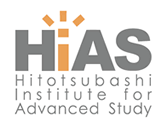Quality and Price Personalization under Customer Recognition: a Dynamic Monopoly Model with Contrasting Equilibria
Abstract:
We present a model of market hyper-segmentation, where a monopolist acquires within a short time all information about the preference of consumers who purchase its vertically differentiated products. The firm offers a new price/quality schedule after each commitment period. Lower consumer types may have an incentive to delay their purchases until next period to obtain a better introductory offer. The monopolist counters this incentive by offering higher informational rents. Considering the dynamic game played by the monopolist and its customers, we find that there is always a Markov perfect equilibrium (MPE) in which the firm immediately sells the good to all customers (and getting full commitment profits). However, if the commitment period between two offers is long enough, there is another MPE with gradual market expansion. Contrary to the Coasian result for a durable-good monopoly, we find that in both equilibria the profit of the monopolist increases (and the aggregate consumers surplus decreases) as the interval of commitment shrinks. The model yields policy implications for regulations on collection and storage of customers information.
| Report No.: | HIAS-E-96 |
|---|---|
| Author(s): | Didier Laussel(a), (b), (c) Ngo Van Long(d), (e) Joana Resende(f) |
| Affiliation: | (a) Aix-Marseille University (b) CNRS (c) EHESS (d) Department of Economics, McGill University (e) Hitotsubashi Institute for Advanced Study, Hitotsubashi University (f) Cef.up, Economics Department, University of Porto |
| Issued Date: | February 2020 |
| Keywords: | monopoly; product quality; customer information; intertemporal price discrimination |
| JEL: | L12, L15 |
| Links: | PDF, HERMES-IR, RePEc |











